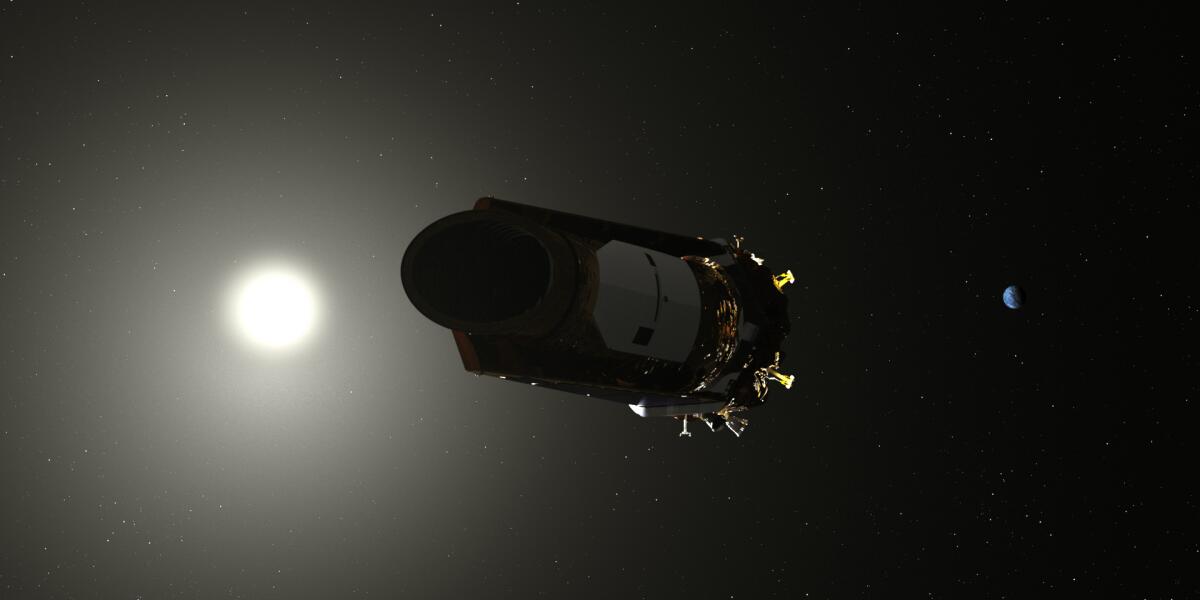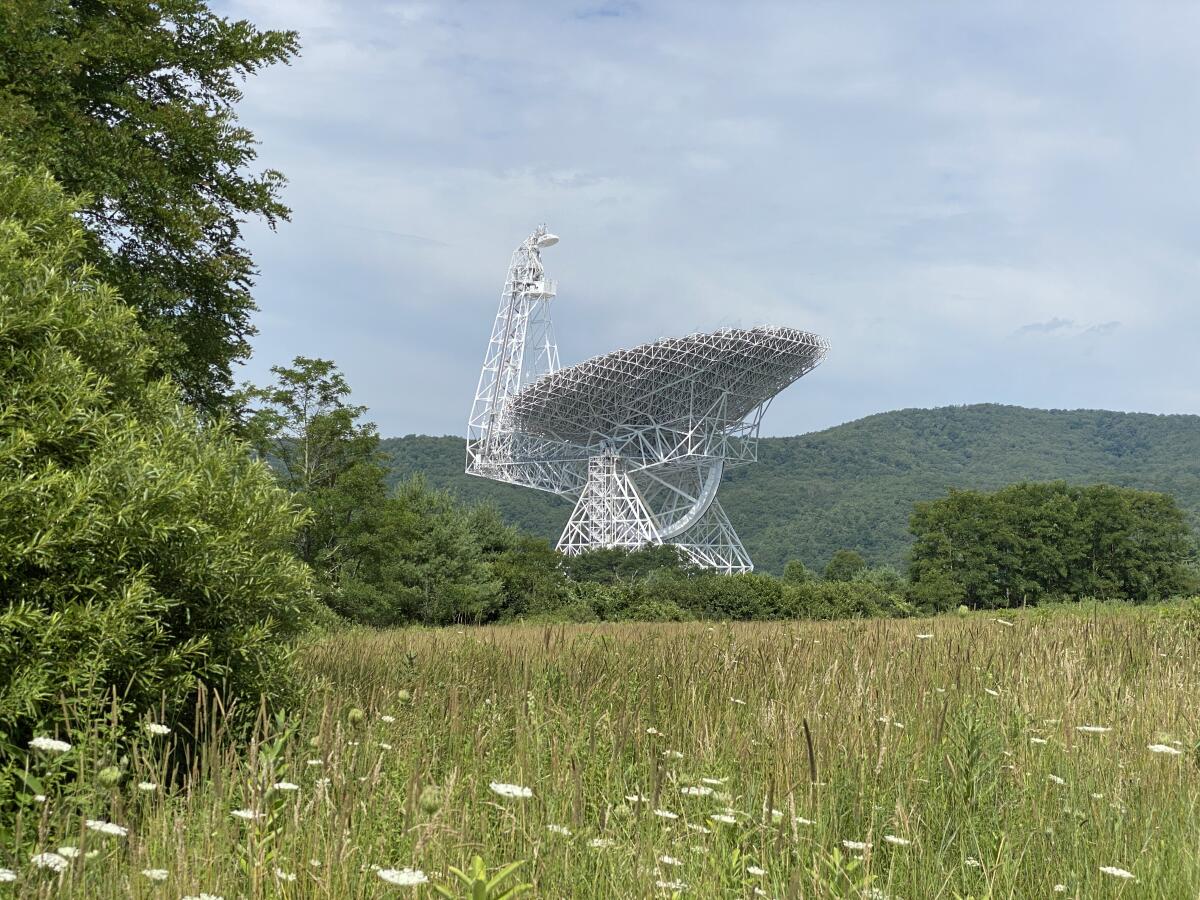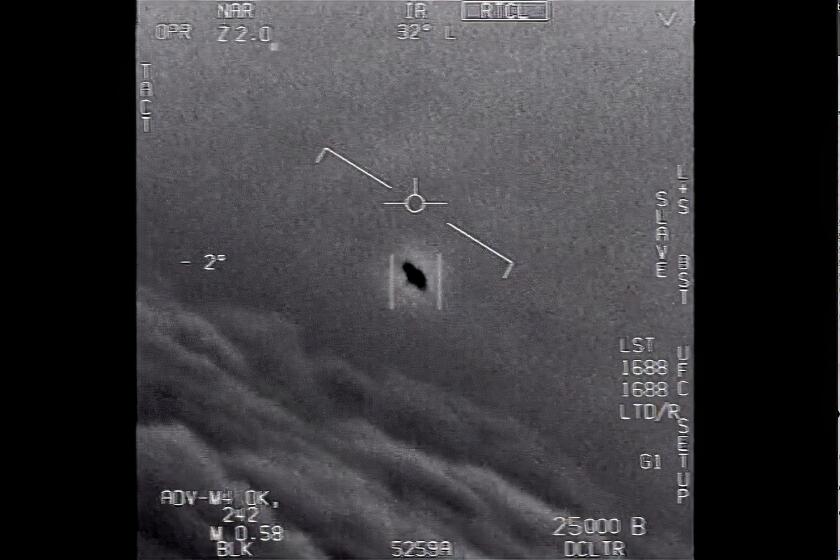UCLA is asking for the public’s help in finding signs of extraterrestrial intelligence

Imagine that you live alone in a dark, hilly wood that stretches for miles in all directions. You know your own forest well, having hiked and surveyed it as far as your feet and your tools allow. In all these explorations, you have never met another soul. For all you know, you’re the only person there is.
Then one day, at the top of the highest point in your forest, you see a light in the distance. It’s too far away to tell who or what is generating it. You have no idea if it’s meant to catch your attention, or if you’re merely observing the activity of something that has no idea that you are there.
But the light confirms a suspicion you’ve harbored for some time: You are not alone.
If there is intelligent life beyond this planet, this is the way astronomers and planetary scientists believe we will first notice it.
Forget weird balloons and flying saucers. Consume reports of alien abductions with a heavy shake of salt. Given the physics of space and the extraordinary distances between potentially habitable solar systems, the first sign we’re likely to get of any other civilization would be an unusual pulse of energy intercepted by a telescope.
Three mysterious objects were shot out of North American skies in a three-day period. They’re UFOs, but that doesn’t mean they were sent by aliens.
Earth-bound telescopes have picked up tens of millions of electromagnetic signals. Most of them are the byproduct of terrestrial technology, satellites or other identifiable sources.
A team of scientists at UCLA is sifting through all of that noise for a very specific type of signal that can’t be generated by any natural source in the known universe. And they’d like you to help them find it.
On Tuesday, the UCLA SETI group launched “Are we alone in the universe?”, a citizen-science effort to sort data collected by the Green Bank Telescope in West Virginia, the largest fully-steerable telescope on Earth.
No formal training or scientific background is needed: If you’re able to distinguish visual patterns, a few minutes’ tutorial on the website is all you need to evaluate some of the tens of thousands of images in the site’s database.
Like most scientists in the SETI — shorthand for Search for Extraterrestrial Intelligence — community, team leader Jean-Luc Margot readily acknowledges that finding conclusive proof of intelligence beyond Earth is an extremely long shot. No sign of civilization has been found in any space mission so far. Every single lead that’s ever caught researchers’ attention has turned out to have a non-alien explanation.

Yet Margot reasons it’s entirely possible something else is out there in the fathomless expanse of this 13.7-billion-year-old universe.
And if there is, it would be super-cool to find it.
“It’s sort of unimaginable what we could learn,” Margot said. “If we could decode the signal and extract the information from it, we have the potential to establish contact with a civilization that’s far more advanced than we are.”
The Belgian-born Margot became interested in SETI as a graduate student at Cornell University, the academic home of astronomer Carl Sagan, an enthusiastic proponent of the scientific search for extraterrestrial life.
He got more serious about SETI after what he called the “Kepler revolution” — the discovery by the Kepler Space Telescope that there are more planets in the universe than there are stars, and that many of these planets are small, rocky orbs a comfortable distance from their host star, just like Earth.

There are 100 billion stars in our galaxy, many with planets of their own. “Even if the probability for life arising on any single planet is small, the fact that we have tens of billions of them makes it statistically plausible,” he said.
In his own search for intelligent life, Margot focuses on radio waves. Given that they are easy to generate and travel at the speed of light, many SETI researchers agree that radio waves are one of the more likely contenders for the first thing we notice from an alien civilization.
Using the Green Bank Telescope, the SETI Group is looking for narrowband signals of 3 Hz or less, much smaller than the transmission frequencies used by radio stations. Nothing in nature generates signals anywhere near that size. They’d have to come from a built instrument.
The team has collected more than 64 million such narrowband signals from 42,000 stars. Every single one they’ve analyzed so far can be attributed to human-made technology, such as satellites and GPS systems.
The lab’s algorithms are able to recognize roughly 99.5% of the signals collected by the telescope. Given the size of the dataset, however, that still leaves hundreds of thousands of signals the machines can’t easily identify.
That’s where citizen scientists come in. The team is uploading images of the signals’ dynamic spectrum in batches of 20,000. Users will be asked to visit the project’s website to click through the images and answer multiple-choice questions about them: Do the visible lines look mostly vertical, mostly horizontal, or somewhere in between? Is the space between them regular or irregular? Images that don’t neatly fit any of the categories will then be further analyzed by the experts of the SETI group.
In addition to identifying the most unusual and potentially interesting images, the volunteers’ work will also help train the group’s algorithms to get smarter about what they’re seeing, said Bruce Betts, chief scientist at the Planetary Society. The nonprofit gave Margot a $50,000 grant to initiate the citizen science project.
NASA is embarking on a new study on unidentified aerial phenomena, or UAPs — the term scientists use instead of UFOs.
“Humans are better at pattern recognition, right off the bat, and adapting when we don’t quite know what we’re looking for,” Betts said. “This will help make the system faster, more efficient and more accurate.”
The best-known previous attempt to harness volunteers in the search for extraterrestrial life was SETI@home, a project launched at UC Berkeley in 1999. (Initial funding came from the Planetary Society and from Paramount Pictures to promote its film “Star Trek: Insurrection.”)
At a time when computing power was harder to come by than it is now, SETI@home distributed the work of analyzing radio signals to volunteers who downloaded a program on their home PCs and donated their surplus computing cycles to let the program run in the background.
Margot is far more focused on identifying any potential signals than he is on imagining what kind of being might have sent it. The one thing he is certain about is that if another intelligent civilization is out there, it’s almost certainly far, far more advanced than ours.
Our species has industrialized only in the last 200 years, a practically imperceivable sliver of time in the universe’s 13.7-billion-year history, Margot pointed out. And given how far the waves must travel, any signal we receive now would have been generated thousands of years ago.

He is also not interested in establishing communication with any other society in the universe. Practically, it’s a moot point. Even traveling at the speed of light, any signal intentionally sent from Earth to another star would take years to get there, and then a reply would take years to travel back.
Nor does he think it a smart diplomatic move.
“I think most SETI scientists would agree that it’s not the right time or place for us to be doing that, especially since we haven’t really consulted globally about doing this,” Margot said. “Even if we did it, again, it would take thousands or tens of thousands of years for the signal to get anywhere useful. I’m more of a pragmatist, and would rather try to do the listening than sending.”
Margot dismisses the idea that intercepting these signals could tip off whatever generated them that someone here is listening. Radio waves do not come with an intergalactic version of read receipts, he said.
“Think of yourself when you’re listening to NPR, right? There’s no way for NPR to know that you’re listening. You’re just receiving radio waves. You’re not sending anything back,” he said. “I’m not losing sleep about somebody coming to colonize Earth.”
What excites Margot, and others who work in the SETI field, is the prospect of decoding whatever information an extraterrestrial intelligence might transmit along with its signal — not to mention confirming that the life on this planet is not the only kind in the universe.
Remote as that prospect may be, it’s too compelling not to explore, Betts said.
“We don’t know what’s out there, or if anything’s out there. What we do know is if we don’t look for these signals, we won’t see them,” Betts said. “To use a baseball analogy, you’re swinging for the fence. And you’re probably gonna miss.”









